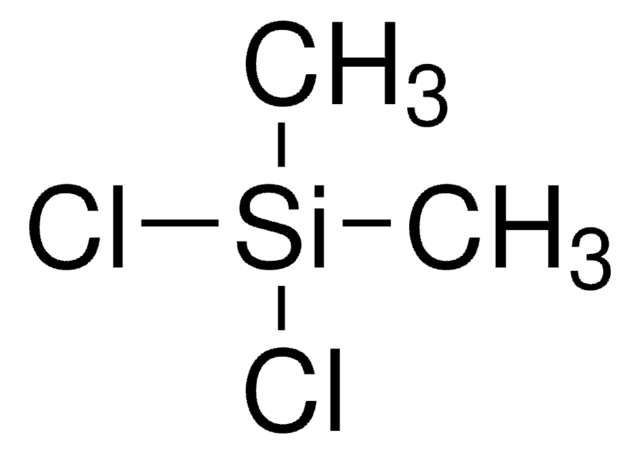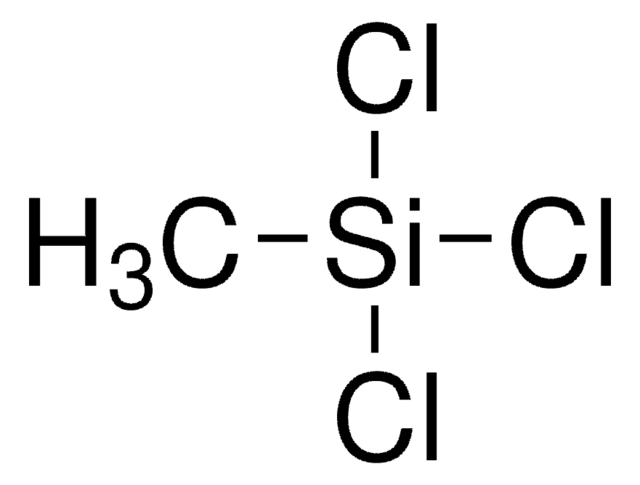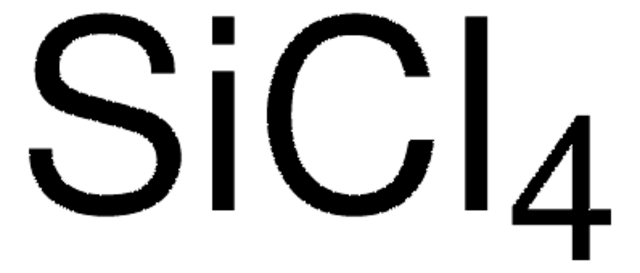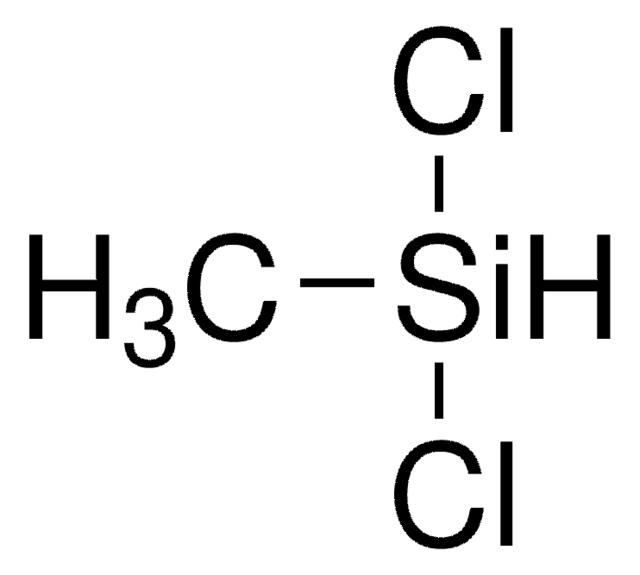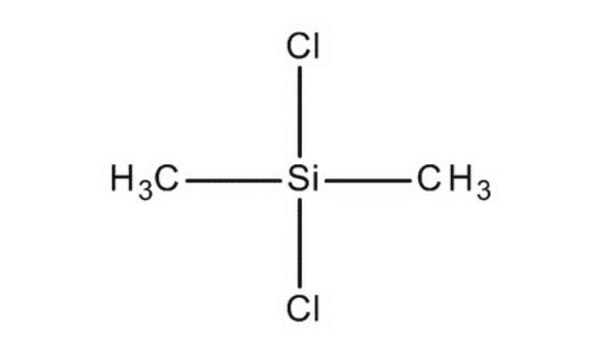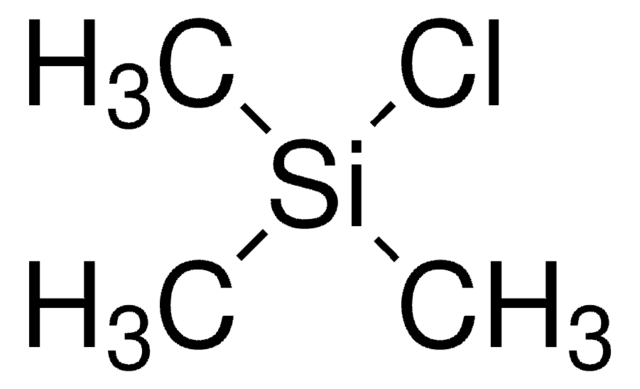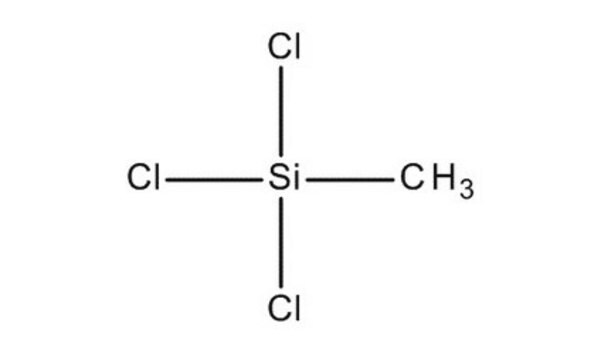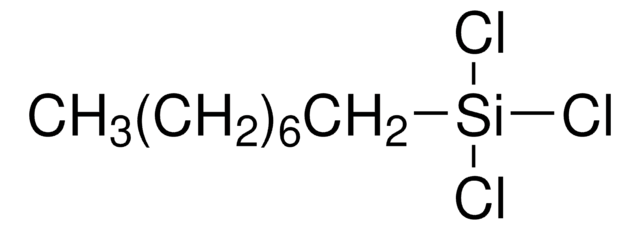M85301
Methyltrichlorosilane
99%
Synonym(s):
MTS, Trichloro(methyl)silane
About This Item
Recommended Products
vapor density
5.2 (vs air)
Quality Level
vapor pressure
150 mmHg ( 25 °C)
Assay
99%
form
liquid
autoignition temp.
>760 °F
expl. lim.
11.9 %
refractive index
n20/D 1.411 (lit.)
bp
66 °C (lit.)
density
1.273 g/mL at 25 °C (lit.)
SMILES string
C[Si](Cl)(Cl)Cl
InChI
1S/CH3Cl3Si/c1-5(2,3)4/h1H3
InChI key
JLUFWMXJHAVVNN-UHFFFAOYSA-N
Looking for similar products? Visit Product Comparison Guide
Application
- As a reagent for the surface-functionalization of fabrics and mesoporous materials to increase their hydrophobicity.
- As a source of silicon to synthesize silica doped carbon nanotubes.
Signal Word
Danger
Hazard Statements
Precautionary Statements
Hazard Classifications
Acute Tox. 3 Inhalation - Acute Tox. 4 Dermal - Acute Tox. 4 Oral - Eye Dam. 1 - Flam. Liq. 2 - Skin Corr. 1A - STOT SE 3
Target Organs
Respiratory system
Storage Class Code
3 - Flammable liquids
WGK
WGK 1
Flash Point(F)
46.4 °F - closed cup
Flash Point(C)
8 °C - closed cup
Personal Protective Equipment
Choose from one of the most recent versions:
Already Own This Product?
Find documentation for the products that you have recently purchased in the Document Library.
Customers Also Viewed
Our team of scientists has experience in all areas of research including Life Science, Material Science, Chemical Synthesis, Chromatography, Analytical and many others.
Contact Technical Service